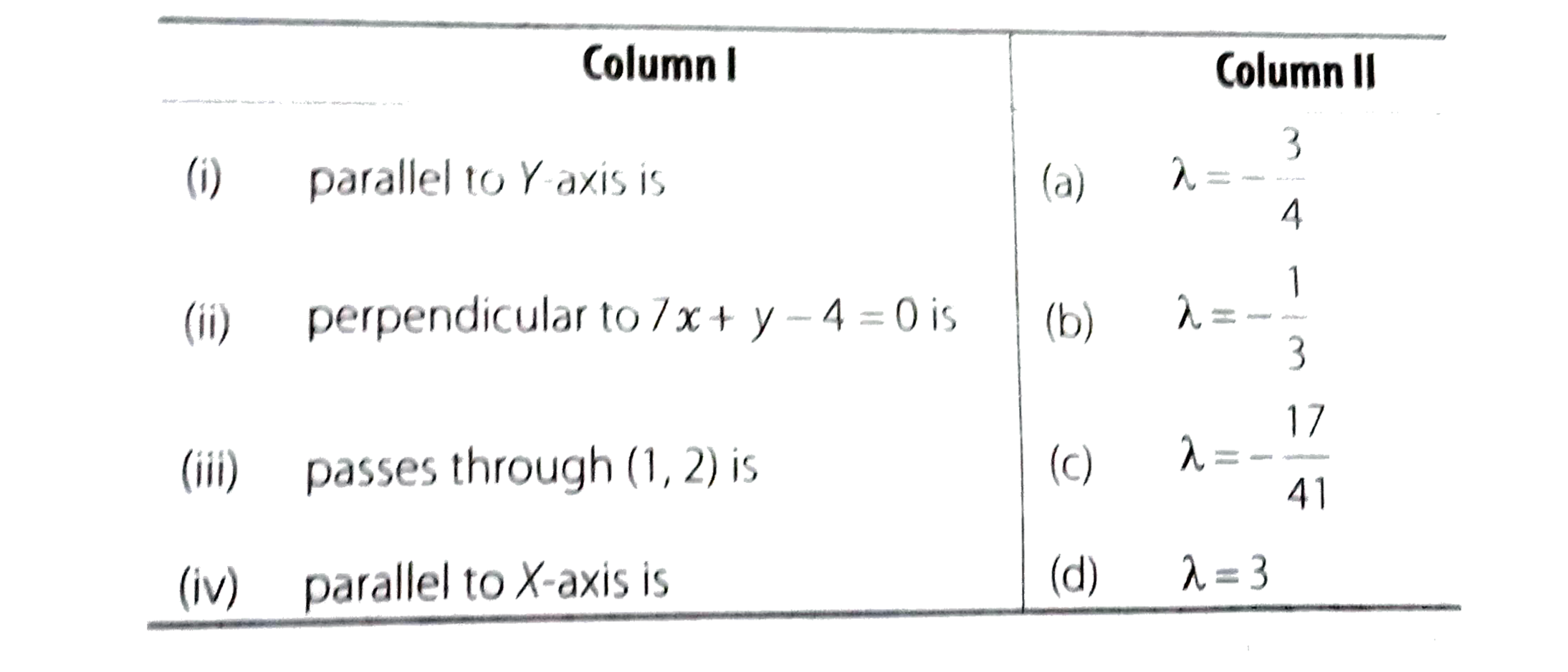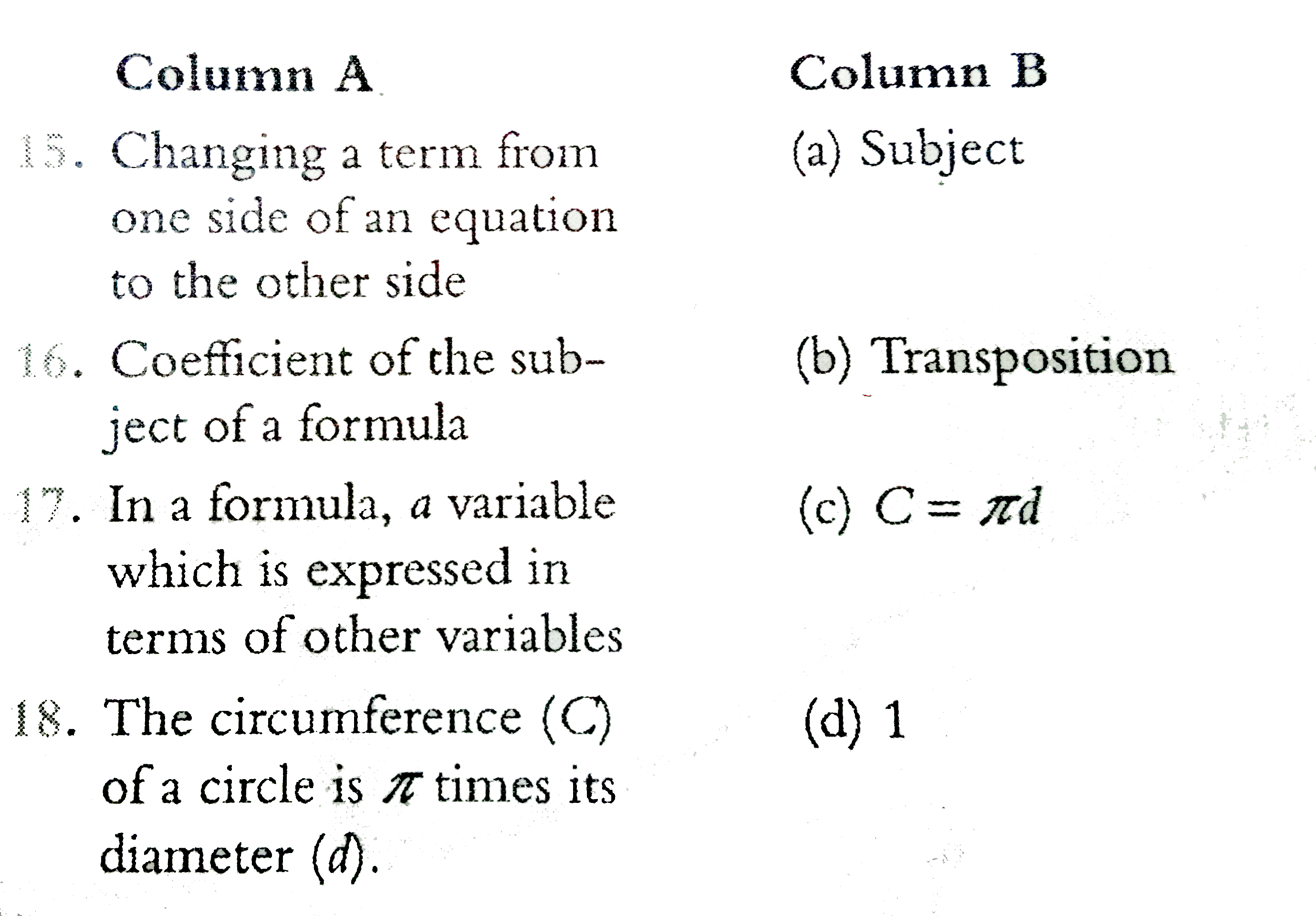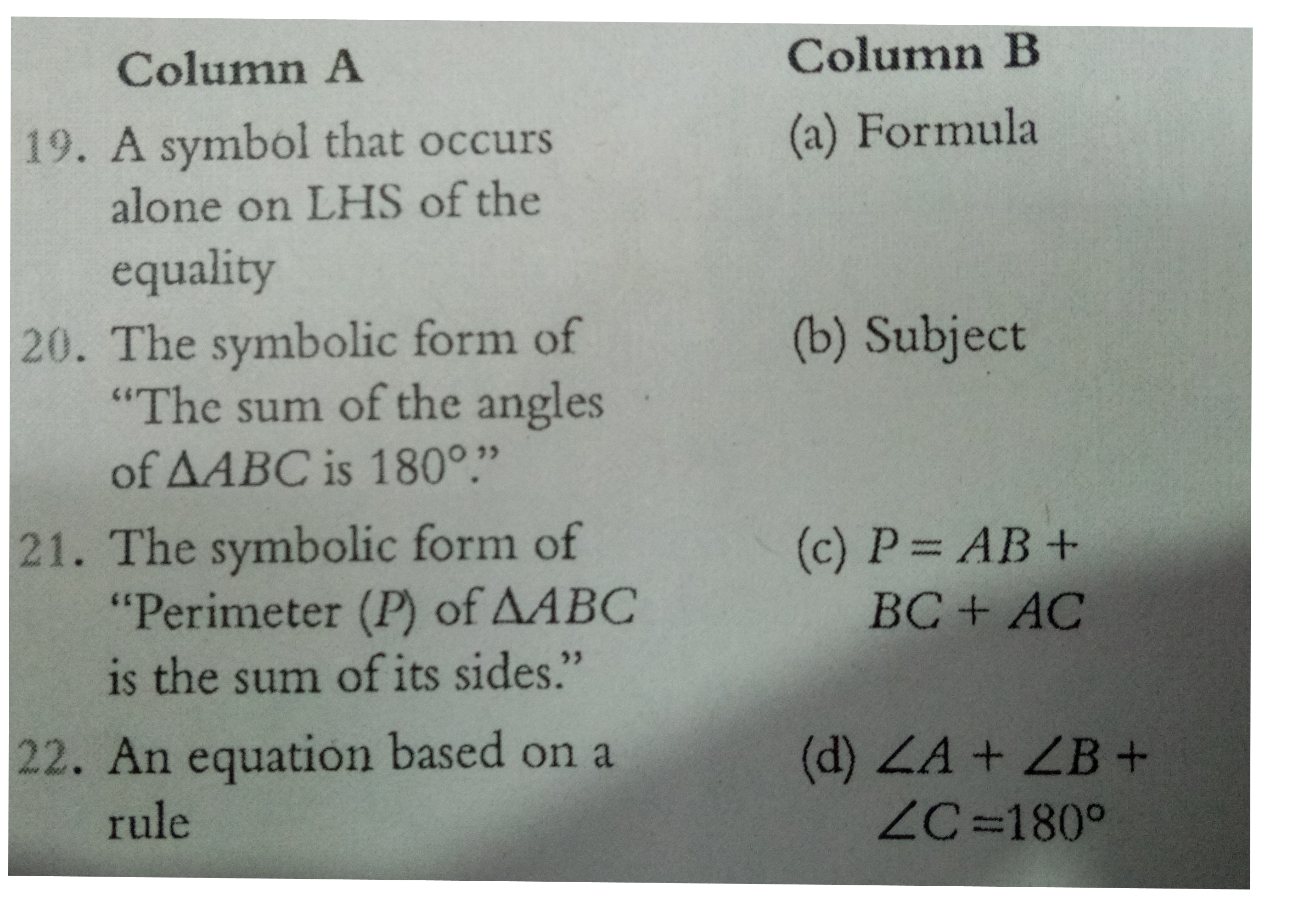The value of the λ if the lines (2x+3y+4)+λ(6x−y+12)=0 are

The correct Answer is:N/a
(i) Given equation of the line is
(2x+3y+4)+λ(6x−y+12)=0 (i)
If line is parallel to Y-axis i.e., it is perpendicular to X-axis.
Slope = m = tan90∘=∞
From line (i), x(2+6λ)+y(3−λ)+4+12λ=0
and slope =−2+6λ3−λ
⇒−2−6λ3−λ=∞
⇒−2−6λ3−λ=10⇒λ=3
(ii) if the line (i) is perpendicular to the line 7x+y−4=0 or y=−7x+4
∵−(2+6λ)3−λ(−7)=−1
⇒14+42λ=−3+λ
⇒41λ=−17
⇒λ=−1741
(iii) If the line (i) passes through the point (1,2).
Then, (2+6+4)+λ(6−2+12)=0
⇒12+16λ=0⇒λ=−34
(iv) If the line is parallel to X-axis the slope =0
Then, −(2+6λ)3−λ=0
⇒−(2+6λ)=0⇒λ=−13
So, the correct matches are (i) → (d), (ii) → (c ), (iii) → (a), (iv) → (b).
Topper's Solved these Questions
Similar Questions
Coefficient of variaton =…Mean×100
View SolutionHow many lines of symmetry does the above figure have ?
View SolutionDetermine the point of symmetry of a regular hexagon.
View SolutionDtermine the images of the following figure about the given line :
View SolutionMatch the following Column A to Column B

View SolutionMatch the following Column A to Column B

View SolutionMatch the following Column A to Column B

View SolutionThe inequation represented by the graph given below is :
View SolutionThe inequation that best describes the graph given below is _________
View SolutionThe inequation that best describes the following graph is _________
View SolutionIn Fig, find the value of x.
ltimg src="https://d10lpgp6xz60nq.cloudfront.net/physics_images/PS_MATH_IX_C12_S01_032_Q01.png" width="80%"gt
View SolutionThe equation of straight line shown in figure is :
ltimg src="https://d10lpgp6xz60nq.cloudfront.net/physics_images/ALN_PHY_R04_E01_020_Q01.png" width="80%"gt
View SolutionAt x=0, value of (dy)/(dx) is : ltimg src="https://d10lpgp6xz60nq.cloudfront.net/physics_images/ALN_PHY_R04_E01_024_Q01.png" width="80%"gt
View SolutionAt point P, the value of (dy)/(dx) is : ltimg src="https://d10lpgp6xz60nq.cloudfront.net/physics_images/ALN_PHY_R04_E01_025_Q01.png" width="80%"gt
View SolutionAt x=0, value of dydx is :
ltimg src="https://d10lpgp6xz60nq.cloudfront.net/physics_images/ALN_PHY_R04_E01_024_Q01.png" width="80%"gt
View Solution→A+→B+→C=0
then ∣∣→B∣∣ and ∣∣→C∣∣ are:
ltimg src="https://d10lpgp6xz60nq.cloudfront.net/physics_images/ALN_PHY_R02_E02_003_Q01.png" width="80%"gt
View Solution

